When it comes to achieving a thriving garden or a successful farming venture, understanding your soil is the foundational step you can’t afford to overlook. Soil analysis is the key to unlocking the secrets of your land and ensuring you provide the best conditions for your plants. In this article, we’ll demystify soil analysis and delve into the crucial first step that you simply can’t skip.
Read, Also >>>>>>> A Guide to Modern Crop Production Technology And How It Is Boosting Yields and Sustainability
Why Soil Analysis Matters
Understanding why soil analysis matters is fundamental for anyone involved in gardening, farming, construction, or environmental management. Soil analysis is the process of evaluating the chemical, physical, and biological properties of soil to gain insights into its composition and health. Here’s why it’s crucial:
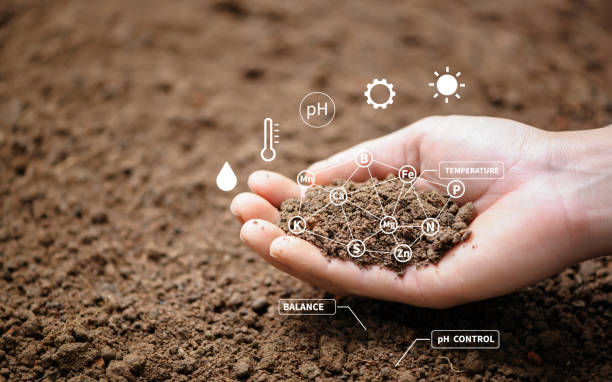
Nutrient Assessment:
Soil analysis helps determine the nutrient content of the soil. This is vital because plants require specific nutrients for growth, and deficiencies can lead to stunted development or poor crop yields. By knowing your soil’s nutrient levels, you can apply the right fertilizers or organic amendments to meet the needs of your plants.
pH Level:
Soil pH is a measure of how acidic or alkaline the soil is. Different plants thrive in different pH ranges. For example, blueberries prefer acidic soil, while asparagus thrives in alkaline conditions. Soil analysis reveals the pH level, enabling you to adjust it to suit the plants you intend to grow.
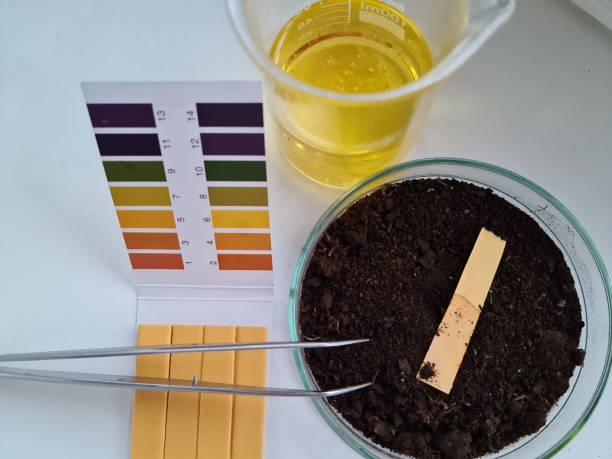
Soil Composition:
Soil isn’t just dirt; it’s a complex mixture of minerals, organic matter, water, and air. Soil analysis provides insights into the composition of your soil, helping you understand its texture (sandy, loamy, clayey), organic matter content, and structure. This knowledge aids in soil management and plant selection.
Read, Also >>>>>>> A Guide to Modern Crop Production Technology And How It Is Boosting Yields and Sustainability

Contamination Detection:
In some cases, soil analysis can identify contaminants such as heavy metals, pesticides, or pollutants. This information is vital for environmental assessments and remediation efforts, ensuring the safety of land use.
Water Management:
Soil analysis also helps determine the soil’s water-holding capacity. This is crucial for effective irrigation planning. Knowing how well your soil retains water can prevent overwatering or underwatering, saving water resources and promoting plant health.
Disease Prevention:
Some soil-borne diseases can affect plants. Soil analysis can uncover conditions favorable to these diseases, allowing you to take preventive measures such as crop rotation or soil sterilization.
Sustainable Practices:
For environmentally-conscious gardeners and farmers, soil analysis promotes sustainable practices. By tailoring your soil management to its specific needs, you reduce the risk of overusing fertilizers or other chemicals, which can harm the environment.
Cost Savings:
Finally, soil analysis can save you money in the long run. By optimizing your soil’s health and fertility, you can improve crop yields and reduce the need for costly amendments or pest control measures.
In summary, soil analysis matters because it empowers you with critical information about your soil, enabling you to make informed decisions for the health of your plants, the environment, and your budget. Whether you’re a seasoned farmer or a home gardener, understanding and implementing soil analysis can be a game-changer in achieving your goals and ensuring the sustainability of your land use practices.
The Logical First Step: Soil Sampling
The logical first step in the process of soil analysis is soil sampling. This crucial step lays the foundation for obtaining accurate and meaningful information about your soil. Soil sampling involves the strategic collection of soil samples from your target area, whether it’s a garden, a farm, a construction site, or an environmental study zone. Here’s why soil sampling is so essential:
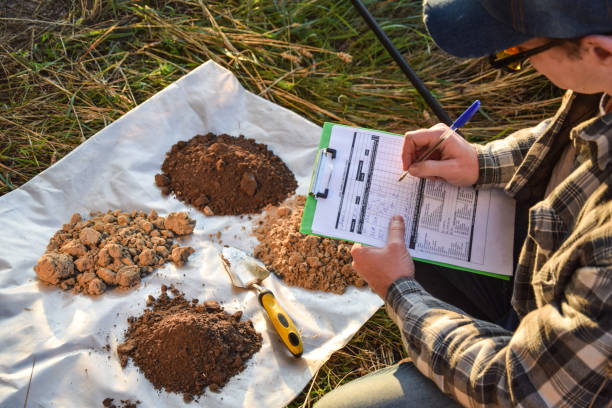
- Representative Data: Soil sampling ensures that the data obtained is representative of the entire area under examination. It’s like taking a snapshot of the soil’s characteristics at various locations within your project area. This diversity in sampling locations accounts for the natural variability that exists in soil properties.
- Accurate Assessment: By collecting samples from different points, you gain a more accurate assessment of your soil’s overall health and quality. This is crucial for making informed decisions about soil management, crop selection, or environmental remediation.
- Identifying Variability: Soil isn’t uniform; it varies in terms of nutrient content, pH, texture, and other factors across even a relatively small area. Soil sampling helps you identify these variations, allowing you to address specific issues in different parts of your land.
- Tailored Recommendations: Once you have the soil samples, they can be sent to a reputable laboratory for analysis. The results provide precise information about your soil’s nutrient levels, pH, and other properties. Armed with this data, you can tailor your soil management practices, such as fertilization or pH adjustment, to suit the unique needs of your plants.
- Baseline Data: Soil sampling establishes a baseline for future comparison. By periodically resampling the same locations, you can track changes in your soil’s health over time. This is especially valuable for long-term agricultural or environmental projects.
So, how do you go about soil sampling? Here are the key steps:
1. Divide into Zones: Start by dividing your project area into zones based on factors like soil type, land use, or topography. Each zone should have similar characteristics, making your samples more representative.
2. Select Sample Sites: Within each zone, choose multiple sample sites. Avoid areas with obvious anomalies like bare patches or high-traffic areas. Randomly select locations to ensure a balanced representation.
3. Collect Samples: Use a soil auger or probe to collect samples at a consistent depth. For most purposes, a depth of 6-8 inches is suitable, but adjust as needed based on your project’s requirements.
4. Mix Samples: Combine the individual samples from each zone to create a composite sample for that zone. Thoroughly mix the samples to ensure uniformity.
5. Store Properly: Place the mixed samples in clean, labeled containers. Store them in a cool, dry place to prevent contamination or changes in moisture content.
In conclusion, soil sampling is the critical first step in soil analysis. It ensures that the subsequent testing and analysis provide accurate and reliable results. By taking the time to sample your soil properly, you’re setting the stage for successful soil management, whether you’re nurturing a garden, optimizing a farm, or conducting an environmental study.
Sending Samples for Analysis
Once you’ve completed the essential step of soil sampling, the next crucial phase in soil analysis is sending your carefully collected samples to a reputable soil testing laboratory for analysis. This step is vital as it transforms your soil samples into valuable insights that can guide your land management decisions. Here’s how to go about sending soil samples for analysis:
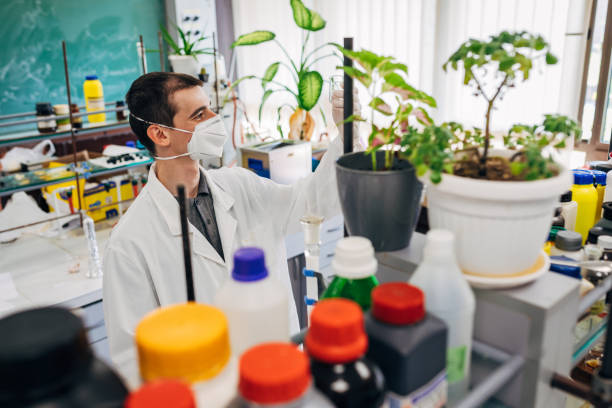
-
Choose a Certified Laboratory:
- Start by researching and selecting a certified soil testing laboratory. Certification ensures that the lab meets industry standards and follows rigorous quality control procedures.
- Look for a laboratory that specializes in the type of analysis you require. Some labs focus on agricultural soils, while others may specialize in environmental or construction-related analyses.
-
Complete the Submission Form:
- Most laboratories provide a submission form or questionnaire that you’ll need to fill out. This form gathers essential information about your samples and your specific needs.
- Be thorough and accurate when completing the form. Provide details about the crops or plants you plan to grow, your land’s history, and any specific questions or concerns you have.
-
Package Samples Securely:
- Proper packaging is crucial to ensure the integrity of your soil samples during transit. Follow any specific packaging instructions provided by the laboratory.
- Typically, soil samples are placed in clean, airtight containers, such as zip-lock bags or plastic containers with tight-fitting lids. Ensure that the containers are properly labeled with unique identifiers for each sample.
-
Shipping and Handling:
- Choose a reliable shipping method to send your soil samples to the laboratory. It’s essential to minimize delays in transit to maintain sample integrity.
- Some laboratories may offer prepaid shipping labels or provide guidelines on the best way to ship samples to their facility.
-
Track and Document:
- Keep a record of your soil sample submission, including the shipping date and any tracking numbers. This documentation can be helpful for reference and follow-up.
- Consider retaining a small portion of your soil samples in case you need to validate results or send samples for additional testing in the future.
-
Await Results:
- The laboratory will analyze your soil samples based on the information you provided in the submission form. The analysis may include tests for nutrient levels, pH, organic matter content, and more.
- Results typically take a few weeks, depending on the lab’s workload and the complexity of the analysis. Be patient while you await the findings.
-
Interpreting Results:
- Once you receive the soil analysis report from the laboratory, take the time to review and understand the results. Many labs provide recommendations based on the analysis, such as fertilizer application rates or pH adjustment guidelines.
- If you have questions or need clarification about the results, don’t hesitate to reach out to the laboratory’s experts for assistance.
In summary, sending your soil samples to a reputable laboratory for analysis is the final step in the soil analysis process. It’s the stage where raw data is transformed into actionable information, helping you make informed decisions about soil management, crop selection, or environmental remediation. By following the proper procedures for submission and ensuring accurate documentation, you can maximize the benefits of soil analysis for your specific project or land management goals.
Conclusion
In conclusion, soil analysis is a fundamental practice for anyone involved in gardening, farming, construction, or environmental management. It provides valuable insights into the composition and health of your soil, empowering you to make informed decisions that can significantly impact the success of your projects and the sustainability of your land use practices.
We’ve explored the key aspects of soil analysis, from understanding why it matters to the critical steps of soil sampling and sending samples for analysis. Here are the main takeaways:
Why Soil Analysis Matters:
- Soil analysis helps you optimize nutrient levels, adjust pH, and diagnose soil issues, leading to healthier plants and higher crop yields.
- It detects contaminants and supports sustainable practices by reducing environmental impact.
- Proper water management, disease prevention, and cost savings are additional benefits.
The Logical First Step: Soil Sampling:
- Soil sampling is the foundation of accurate soil analysis, ensuring representative data.
- Dividing your area into zones and selecting random sample sites are key to obtaining meaningful results.
- Proper mixing and storage of samples maintain their integrity.
Sending Samples for Analysis:
- Choosing a certified laboratory that specializes in your specific needs is crucial.
- Completing the submission form accurately and packaging samples securely are essential steps.
- Tracking and documenting the submission, along with careful interpretation of results, help you make informed decisions.
By following these steps and investing in soil analysis, you not only enhance the productivity of your garden or farm but also contribute to responsible land management and environmental stewardship. Whether you’re a seasoned agricultural expert or a novice gardener, the insights gained from soil analysis can be a game-changer in achieving your goals and ensuring the long-term health of your soil and the success of your projects.
Read, Also >>>>>>> A Guide to Modern Crop Production Technology And How It Is Boosting Yields and Sustainability








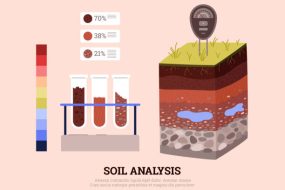
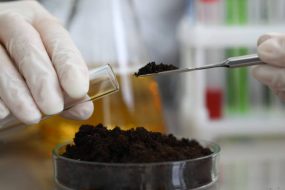
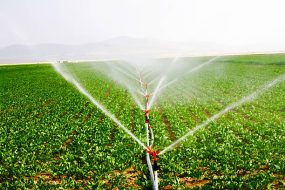

One reply on “What Is The Logical First Step You Can’t Afford to Skip In Soil Analysis?”
[…] Read, Also >>>>>>> What Is The Logical First Step You Can’t Afford to Skip In Soil Analysis? […]